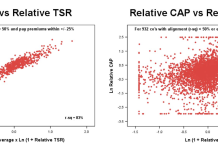Concerns about China’s economy continue to grow as global oil prices dropped over 1% today (Monday, 19th June 2023), but what does this mean for the Chinese government and the international economy?
Concerns regarding China’s economy overshadowed the positive effects of OPEC+ output reductions this week, along with the ongoing decrease in the number of oil and gas rigs operating in the United States.
WTI Crude oil price falls by 1.1%
After a decrease of $1.15, U.S. West Texas Intermediate (WTI) crude oil fell by 76 cents or 1.1% to reach $71.02 from its previous value of $70.63.
West Texas Intermediate (WTI) crude oil fell by 76 cents or 1.1%
Brent crude witnessed a decline of 78 cents, equivalent to 1%, and settled at $75.83 per barrel. Earlier, it had dropped as low as $75.34, experiencing a decrease of $1.27.
The previous week saw a positive increase as Brent crude recorded an increase of 2.4%, while WTI (West Texas Intermediate) experienced a rise of 2.3%; however, this week has seen that progress wiped away.
Global oil prices and the weakening of the Chinese economy
According to Tina Teng, an analyst at CMC Markets, the recent decline in oil markets and global oil prices following a two-day recovery could be attributed to concerns over China’s economic uncertainties.
These doubts can possibly be attributed to the People’s Bank of China’s (PBOC) upcoming decision regarding its loan prime rates (LPR) this week.
Following the release of the May data, experts have noticed a weakening post-COVID recovery in China; with several prominent banks having revised down their gross domestic product (GDP) growth forecasts for the country in 2023.
These downward revisions reflect concerns over the faltering performance of the world’s second-largest economy.

China’s benchmark loan rate reduction
There is widespread anticipation that China will implement a reduction in its benchmark loan prime interest rates on Tuesday. This move comes in the wake of a recent decrease in medium-term policy loans aimed at strengthening a fragile economic recovery.
According to sources cited by Reuters, China is planning to introduce additional stimulus measures to support its decelerating economy in the coming year.
However, these measures will likely be focused on addressing weak consumer and private sector demand, as concerns over debt and capital outflows remain significant factors to be considered.
Despite the aforementioned factors, it is noteworthy that China witnessed an increase in refinery throughput during May, reaching its second-highest level ever recorded. This development played a role in bolstering the gains observed last week.
The decline in US oil and gas rigs for the seventh week
Additionally, in the United States, energy companies reduced the count of operational oil and natural gas rigs for the seventh consecutive week, marking the first instance of such a decline since July 2020.
In the week ending June 16, the count of oil and gas rigs, which serves as an early predictor of future production, experienced a decrease of 8, reaching a total of 687. This marks the lowest count since April 2022.
Edward Moya of OANDA noted that oil prices on Monday declined due to concerns over OPEC+ members’ ability to enforce production quotas, exerting downward pressure on prices.
Igor Sechin’s remarks at an economic forum
Russian energy major Rosneft, led by Igor Sechin, is proposing that the oil producers’ cartel shifts its focus from production to exports, according to Moya’s comments.
During an economic forum on Saturday, Sechin expressed the view that it would be prudent for OPEC+ to not only track production quotas but also monitor oil export volumes. This suggestion stems from the recognition of variations in the sizes of each country’s domestic markets.
In the beginning of this month, OPEC+ reached a consensus on a fresh oil output agreement.
Notably, Saudi Arabia, the largest producer within the group, committed to a significant reduction in its output for the month of July.
China’s disappointing recovery hinders oil demand growth
China’s revised Covid-19 guidelines announced last December, which aimed to relax testing and travel restrictions, fell short of expectations for a rapid economic recovery and increased oil demand.
The country’s industrial sector has underperformed compared to consumer-facing industries, while trucking activity and jet fuel demand have failed to meet projected levels. China’s lacklustre recovery has dampened market enthusiasm and cast doubt on the anticipated boost in oil demand.
Following the relaxation of Covid-19 restrictions, Chinese refiners eagerly purchased crude oil in anticipation of a rapid rebound in downstream demand. However, this optimistic outlook has not come into play, resulting in onshore inventories reaching a two-year high.
Adding to the concerns, Bloomberg reports a weakening credit demand in China, signalling a loss of momentum in the country’s economic recovery. In May, aggregate financing amounted to 1.6 trillion yuan ($224 billion), significantly below the expected estimate of 1.9 trillion yuan.











